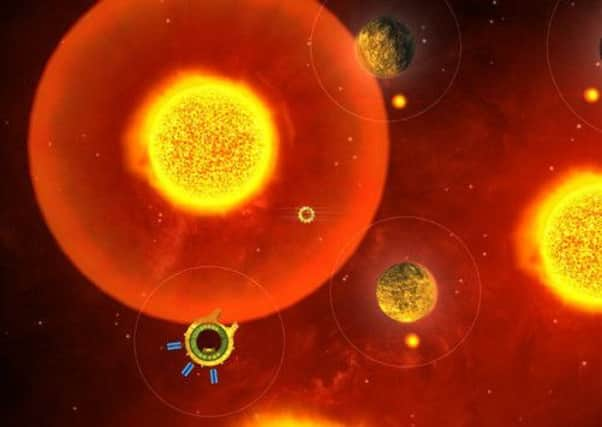Scotsman Games review: Solar Flux HD - iPad


Solar Flux HD - iPad, PC/Mac (via Steam)
Score: 8.7/10
Thankfully, Glasgow’s Firebrand Games are a philosophical lot, devoting their energies not to the creation of yet another fearsome alien race, but an immersive intergalactic experience of which Stanley Kubrick would have no doubt approved. For a studio best known for the use of its proprietary cross-platform Octane 5 engine in racing titles like Fast & Furious Showdown and Need for Speed: The Run, it is a pleasant and unexpected surprise, and proof that its decision to focus more its own IPs is a wise one.
Released on iPad in August, Solar Flux HD debuts on Steam towards the end of this month, with Android and iPhone versions also imminent. Set a century from now, you are responsible for saving dying suns in a universe teetering on the brink of extinction. Piloting a small craft, you navigate a strategic course to muster as much plasma as possible, firing the balls of energy towards the ailing planets to provide them with some vital nourishment. The process is hindered by a succession of obstacles, such as meteors and mines, although the greatest impediment is, in fact, thoughtlessness - you need not concern yourself with hostile foes in Fireband’s universe, for it is the player who is their own worst enemy. Fuel is a scarce commodity whittled away without forward planning, and to splurge it incessantly using thrusters is a guarantee of failure.
Advertisement
Hide AdAdvertisement
Hide AdAt the controls of your ship, you the composer of a transfixing interplanetary opera. The craft gently lulls.as it rides the wave of flares emitted by restored suns, or spurt off in new directions having leveraged the slingshot-style gravitational pull of planets. Lose your way to become a weightless hostage drifting into oblivion, and the thrusters are there to restore momentum. It is a game where lessons in rudimentary physics which are never quite as easy to master as they seem. Even if you negotiate one of the 80 solar systems satisfactorily, the temptation is to replay it in search of perfect grace. A series of conditions determine how many stars are awarded for each level. A swift and economic journey through the obstacles using as little rocket juice as possible will reap the full complement of three, unlocking bonus levels and achievements. It can be frustrating to falter, but rather than a stick to beat you with, erroneous play is a source of encouragement, spurring you on to perform better.
By itself, such clever design ensures a good game. Imbued with artful graphics and sound, superlatives are assured. The music is paramount in creating atmosphere reminiscent of other artistic explorations of a the haunting, fragile beauty of life in space, such as Kubrick’s 2001, or Duncan Jones’ Moon. When things are going your way, the soundtrack is tranquil. Commit an error, though, and those same sounds appear to adopt a pensive tone. The sense of ambiguity is also translated in the visuals; suns - both healers and destroyers - emit an eerie, phosphorescent haze, and an austere ambience of life is coherently realised throughout every solar system. For this reason, it should come as no surprise that the game has been promoted by Kennedy a Space Centre. In Firebrand’s capable hands, the conquest of space is not just a victory of science, but art too.